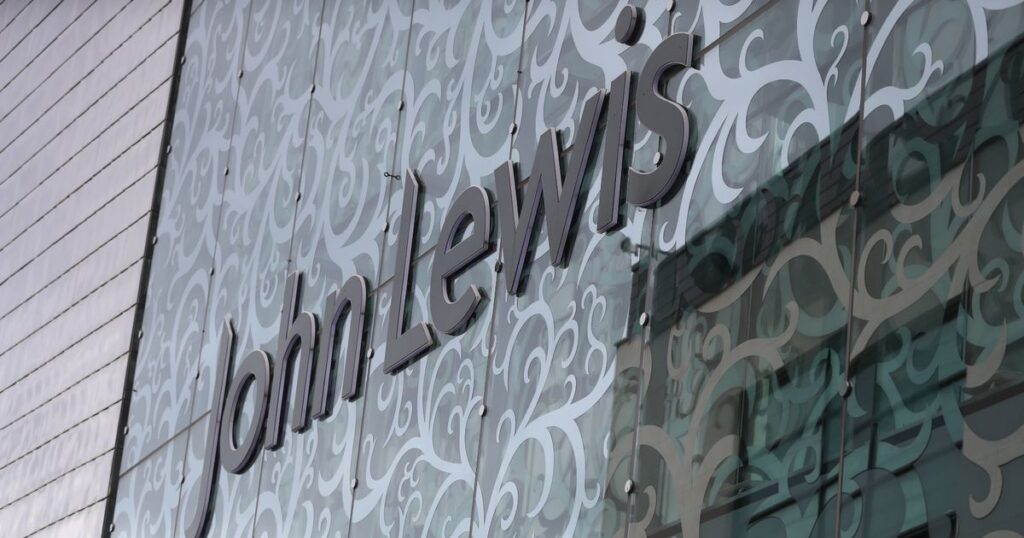John Lewis Partnership has released its latest half-year financial report, demonstrating significant progress in reducing losses and increasing sales.
The iconic UK retailer recorded sales surpassing £5.9 billion for the first half of the year, marking a 2% rise compared to the previous year. Their pre-tax losses also reduced drastically from £59 million down to £30 million.
Solid Sales Growth Amid Economic Challenges
The performance of John Lewis Partnership amidst ongoing economic pressures is particularly commendable. The company’s total revenue reached £5.2 billion, reflecting a 2% growth year-on-year. Waitrose, the partnership’s grocery arm, exceeded expectations by outperforming the market with a 5% increase in sales. Additionally, their adjusted operating profit showed robust growth, amounting to £75 million.
Despite facing inflationary pressures and rising labour costs, John Lewis Partnership has managed to maintain a positive outlook on its future performance. This resilience is a testament to their strategic initiatives aimed at mitigating external economic threats.
Strategic Restructuring and Workforce Management
Earlier this year, the John Lewis Partnership announced a significant restructuring plan aimed at workforce optimisation. This included the decision to cut approximately 150 roles, representing nearly 1% of its entire workforce. These strategic changes are part of a broader transformation initiative designed to streamline operations and enhance overall efficiency.
Despite these strategic workforce reductions, the organisation has remained committed to maintaining high standards of quality, service, and value for its customers. This commitment has been pivotal in retaining customer satisfaction and increasing the customer base.
Tech Investments and Customer Growth
A notable aspect of John Lewis Partnership’s strategy is their substantial investment of £0.5 billion in technology.
The emphasis on technological advancement is crucial for improving operational efficiency and enhancing customer experiences. These investments have led to significant gains, including the addition of 0.5 million new customers in the past six months.
Such investments are not only vital for short-term gains but also lay a strong foundation for long-term growth, ensuring the company remains competitive in a rapidly evolving retail landscape.
CEO Insights on Future Prospects
Nish Kankiwala, CEO of the John Lewis Partnership, has expressed optimism regarding the company’s transformation plan. He credited the hard work of staff and customer loyalty for their improved performance, stating, “These results confirm that our transformation plan is working.”
Mr. Kankiwala also emphasised the expected growth in profits for the full year, which he sees as a significant improvement from the company’s standing two years ago. His sentiments reflect a positive outlook for the future, particularly as the company approaches the critical Christmas trading period.
Challenges and Competitive Landscape
The competitive environment, particularly from rivals such as Marks & Spencer, remains a key challenge for John Lewis Partnership. However, the company has demonstrated resilience through strategic initiatives and robust financial performance.
High inflation and increased labour costs are ongoing challenges that the company continues to navigate. Nevertheless, the focus on quality, service, and value positions the company well to overcome these hurdles.
While external pressures exist, John Lewis has positioned itself well to weather market fluctuations, given its increased focus on customer satisfaction and strategic investments.
Positive Market Reception and Future Plans
The market’s response to John Lewis Partnership’s financial turnaround has been overwhelmingly positive, with stakeholders expressing confidence in the company’s strategy. As the partnership gears up for the peak trading period, there is a strong foundation for continued improvement.
The company’s forward-looking strategies, particularly in tech and customer service, are integral to driving future success. Their proactive approach is expected to yield further growth and profitability.
In summary, John Lewis Partnership’s half-year results highlight a promising trajectory towards financial improvement.
The combination of strategic investments, workforce optimisation, and a focus on customer satisfaction has positioned the company for sustained growth.


